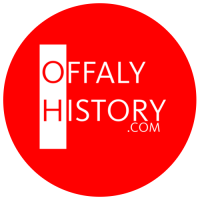Following the 1916 Rising and particularly during the War of Independence, Irish republican prisoners were interned in jails across Ireland and Great Britain, and in specially constructed internment camps, the best known being Ballykinlar in County Down and Rath Camp in the Curragh.
Autograph books were an important aspect of the material culture of the camps and the internees signed each other’s books with political quotes, inspirational messages, and artwork depicting the camps or political ideals.
Although prisoners were released from the camps following the Truce in 1921, anti-treaty republicans were again interned in prison camps such as Tintown in the Curragh during the Civil War.
Well known Tullamore businessman John Flanagan recounts his memories of the 1916 commemorations held in Tullamore in 1966, as he and Michael Byrne examine some stills from the event.
Michael Byrne narrates a slideshow showing scenes from Offaly (King’s County) in the period from 1910 to 1921 as part of our heritage early in the last century.
The first aerial photograph of Tullamore was published in the press in 1918 as part of the work of the Irish Recruiting Council and in an effort to promote voluntary recruiting. Variants of the aerial photograph and the story behind it are also to be found in competing historical accounts of the war and Irish independence.
As part of the Decade of Centenaries, Michael Byrne narrates a slideshow about shopping in the midlands from the period of the 1880’s to the 1920’s concentrating primarily on the branch houses of Daniel E. Williams which were located throughout Laois and Offaly.
The story of the Geashill Cauldron from its discovery in 1859, its disappearance during the War of Independence and its eventual deposit in the National Museum of Ireland in 1955.


